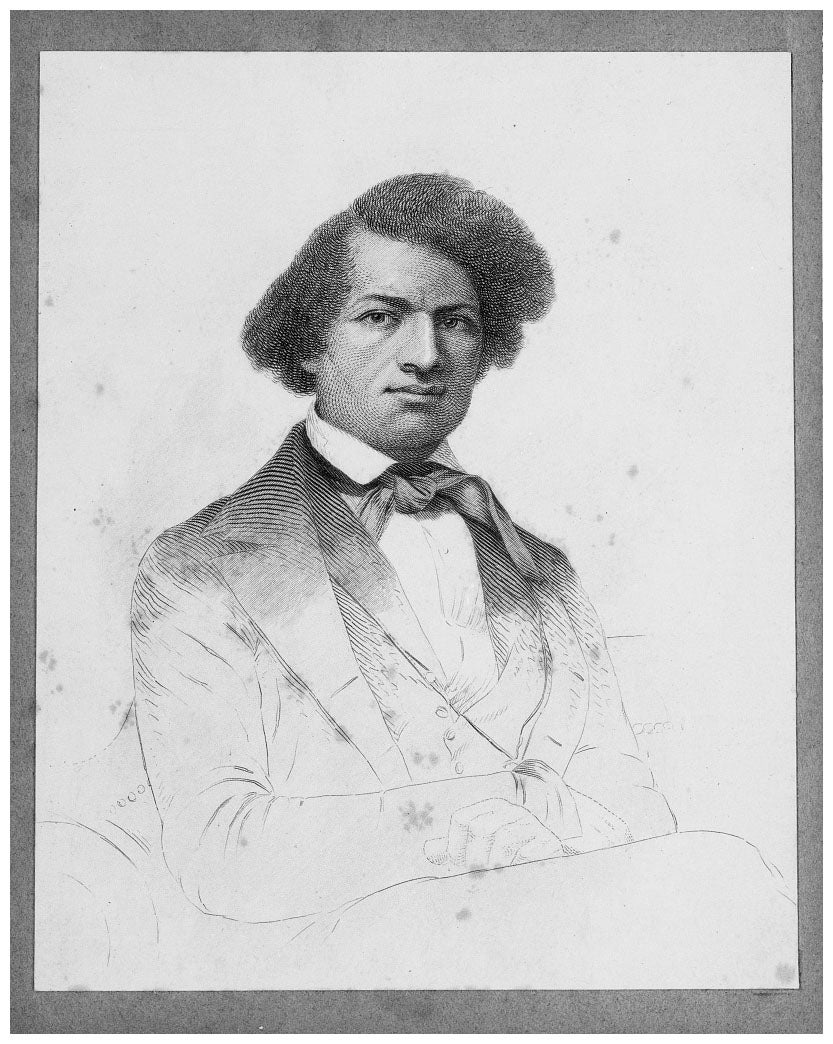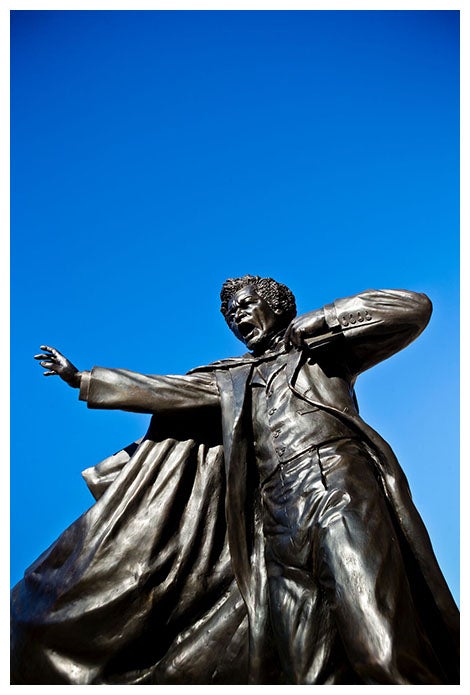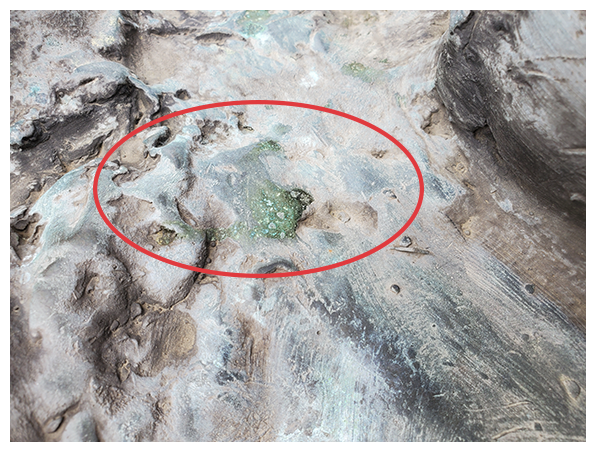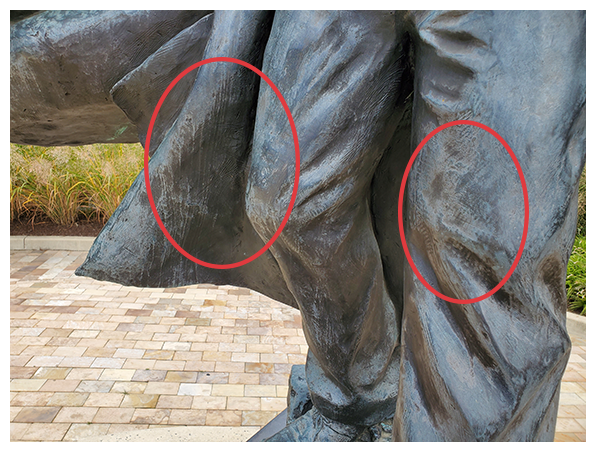For more information about this project, call (301) 405-2222.
Who Was Frederick Douglass?
used in his first autobiography, which is the book
he holds in the statue at UMD.
Born a slave on Maryland’s Eastern Shore in 1818, Frederick Douglass rose to heights unimaginable for an African American in the mid-1800s. After his escape to freedom in 1838, he began to attend abolitionist meetings. He became a newspaper writer and publisher, orator and ambassador for African American civil rights. He also embraced and argued for women's rights, especially the right to vote. He would write and publish three autobiographies - the first in 1845 to dispel rumors that such an articulate and powerful orator could not possibly have been born an illiterate slave. At this time, he traveled to the British Isles to escape possible capture and a return to slavery. While there, he continued to speak against slavery. He especially felt a kinship with the Irish people, relating to them as another group repressed by authority. Abolitionists in the region took up a collection to purchase his freedom so Douglass could return to America with no fear of a return to slavery.
After the Civil War, Douglass soared even higher, holding government positions that included U.S. Marshall for the District of Columbia, D.C Recorder of Deeds and Consul General to Haiti. Douglass died on February 20, 1895 at his home in the Anacostia neighborhood of Washington D.C.
About the Statue
The Fredrick Douglass statue was created by British sculptor Andrew Edwards. The bronze statue portrays a youthful Douglass in Ireland, where he visited, traveling extensively and delivering his anti-slavery message. It stands on a 3-foot-tall base and weighs nearly half a ton.
The statue captures Douglas delivering his words with the passion and ferocity he was known to exude – mouth open wide, hand outstretched, autobiography tucked under his arm. His cape billows in the wind as he stands, proud, determined, and fearless. Edwards described the sculpture as “a symphony of inspirations” - everything from a pose in an ancient Greek statue of Demosthenes and photos of modern President Barack Obama, the long coat of Abraham Lincoln and the cape of Irish liberator Daniel O’Connor.
The statue was brought to the University as a result of years of effort on the part of campus leaders to honor this important Marylander and to reaffirm the University's commitment to social justice. It was installed and dedicated at its current location in November 2015.
Preserving an Icon
After 7 years in the often harsh and ever-changing College Park weather, UMD Facilities Management is restoring the bronze to its original glory – cleaning and treating the sculpture with care, repairing its stately granite base, and creating a long-term stewardship model to ensure this important testament to history serves future generations of Terps as a place for education and reflection. This effort is the first of several phased improvements and restorative efforts to the Square and is expected to be completed by late October 2022.
Historic Documentation
To help mitigate risk associated with movement and repair of the statue, 3-D scans are used to capture an accurate representation of the sculpture in its current state and environment. UMD historic preservationists use two different technologies to create a photo realistic, scaled, digital image.
The LIDAR (light detection and ranging) laser scanner sits on a tripod and slowly spins around the sculpture gathering millions of measurements from different positions. Multiple scans are stitched together to create a single comprehensive scan that includes both the statue and its environment. Laser scanning provides scale measurements and 3-D coordinates, but the final appearance of the model isn’t lifelike. While this type of scanning captures color, it is not photo realistic.
Photogrammetry uses two-dimensional photography to create precise measurements of three-dimensional objects. About 5000 photos will be used for the Fredrick Douglass sculpture. This technology can also help fill in any gaps in the laser scan data. Photogrammetry renders a photo realistic model and calculates the geometry of the object, but doesn’t provide scale. It shows the shape of an object, but not its size.
The best of both worlds – By combining these two technologies, preservationists can create a final model that includes the accuracy of the laser scanner with the photo realism of photogrammetry and provide spatial context.
The Conservation Process
A small crane will be used to lift and relocate the statue, but most work will be performed by hand. The statue will be carefully removed from its base and stabilized before moving it to a new on-site location for conservation. Dirt and corrosion will be removed and patina will be applied to even the color. The final touch is a coating with microcrystalline wax and a buff to create an even sheen and protect the bronze from the weathering effects of the outdoor environment. Once work is complete, the sculpture will be put back in place. The project conservator will also provide a written conservation report with a long-term care plan and photos capturing the sculpture before, during, and after cleaning and repair.




